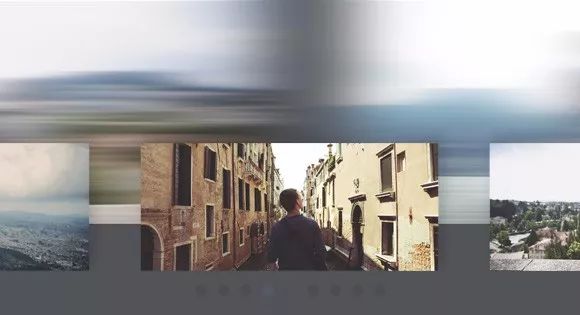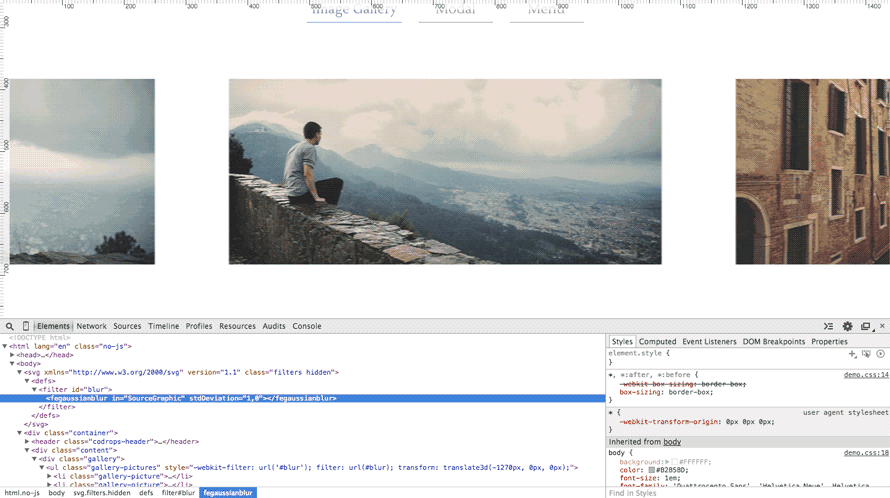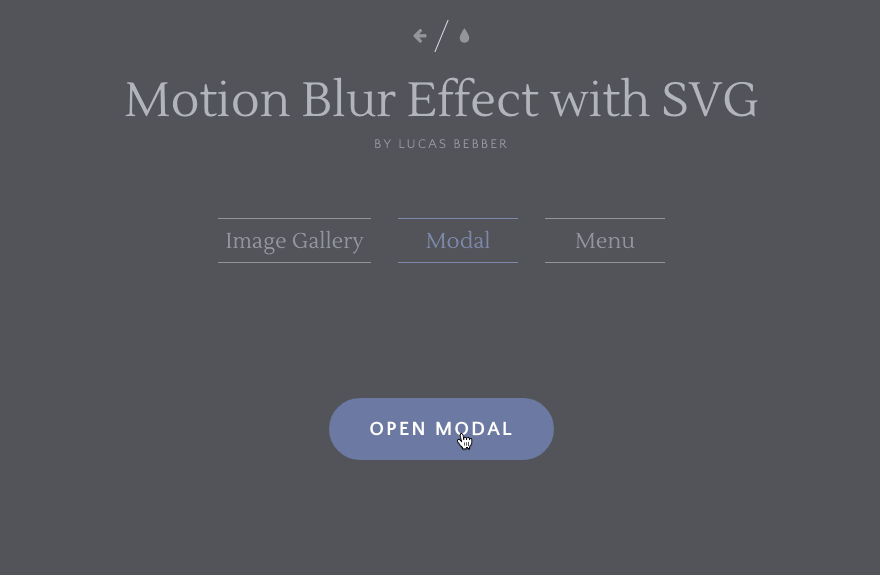今天我们将向大家展示如何制作SVG动态模糊效果,并将其应用于HTML元素的常规JS或CSS动画。
动态模糊是一种广泛使用于动态影像和动画的技术,它能使动作看起来更加平滑自然。

在线演示(http://www.html5tricks.com/demo/html5-svg-motion-blur-effect/index.html)
源码下载(http://www.html5tricks.com/html5-svg-motion-blur-effect.html)
动态模糊是静止图像或一系列图像(如电影或动画)中快速移动物体的明显图像拖尾。当记录的图像在单帧记录期间发生变化时,由于快速移动或长时间曝光从而导致动态模糊的结果。——维基百科上对动态模糊的介绍
在这篇文章中,我们将介绍如何对水平或垂直的转换制作出类似的动态模糊效果。
注意:这种效果非常实用,但只有一些现代浏览器才支持。到目前为止,貌似Chrome具有最佳的性能。
为了对动画应用动态模糊效果,我们需要在每个帧中根据对象的速度和它移动的方向应用方向模糊。

那么,怎么才能产生这种效果呢?
设置模糊
由于常规CSS模糊滤镜不支持定向模糊,所以我们不得不使用SVG滤镜。
我们已经在《Creative Gooey Effects》这篇文章中介绍过SVG滤镜的基础知识。
为此,我们将只使用高斯滤镜模糊feGaussianBlur原语。
<svg xmlns=“http://www.w3.org/2000/svg” version=“1.1” class=“filters”>
<defs>
<filter id=“blur”>
<fegaussianblur in=“SourceGraphic” stddeviation=“0,0”/>
</filter>
</defs>
</svg>
stdDeviation属性用于设置模糊强度,并且可以占用两个参数,用于水平和垂直方向的模糊。
将滤镜应用到一个元素上,就像我们之前看到的那样,非常简单:
.selector{
–webkit–filter: url(“#blur”);
filter: url(“../index.html#blur”);
}
然而,对于动态模糊效果,我们仍得通过JS动态更新每个帧的滤镜。
首先,我们必须选择并将滤镜存储在一个变量中,以便以后可以访问它。由于jQuery与SVG元素不兼容,所以我们需要使用本机JS函数选择元素:
var filters = document.querySelector(“.filters”), // the SVG that contains the filters
defs = filters.querySelector(“defs”), // the element inside the SVG
blur = defs.querySelector(“#blur”), // the blur filter
blurFilter = blur.firstElementChild; // the feGaussianBlur primitive
然后设置强度,即改变滤镜原语的stdDeviation属性。例如,要设置一个水平12px的模糊:
blurFilter.setAttribute(“stdDeviation”,”12,0″);

记住,此模糊滤镜只支持X或Y方向上的方向模糊,不能任意角度,因此你需要相应地规划好动画效果。
还有,改变模糊滤镜会影响与其相关联的所有对象,因此我们需要为将应用此效果的每个对象添加一个新的元素。下面是一种动态创建这些滤镜的简单方法:
// go through all the objects that need a blur filter
$(“.js-blur”).each(function(i){
// clone the filter
var blurClone=blur.cloneNode(true);
// create and set a new ID so we can use the filter through CSS
var blurId=”blur”+i;
blurClone.setAttribute(“id”,blurId);
defs.appendChild(blurClone);
// set the CSS
var filter=”url(#”+blurId+”)”;
$(this)
.css({
webkitFilter:filter,
filter:filter
})
// store the filter reference on the object for practicity
.data(“blur”,blurClone)
;
});
测量速度
接下来,我们需要能够计算得到自上一帧以来对象移动的距离。每一帧我们都要计算。实现方法可能会根据设置的不同而不同;例如动画如何完成方面的设置等等。在本教程中,我们将采用更通用的方法,尽管它可能无法针对所有用例进行优化,但适用于大多数JS和CSS动画。
为了得到距离结果,我们将使用jQuery的offset函数,这正是我们需要的:它返回元素的坐标,相对于文档(而不是它的父类)而言,并且将transform属性考虑在内。
为了能够检查改变并更新每一帧,我们将使用requestAnimationFrame。
下面是一个例子:
// the element we want to apply the effect
var $element=$(“.selector”);
// storing the last position, to be able to measure changes
var lastPos=$element.offset();
// a multiplier, to be able to control the intensity of the effect
var multiplier=0.25;
// a helper to simplify setting the blur.
function setBlur(x,y){
blurFilter.setAttribute(“stdDeviation”,x+”,”+y);
}
(function updateMotionBlur(){
// get the current position of the element
var currentPos=$element.offset();
// calculate the changes from the last frame and apply the multiplier
var xDiff=Math.abs(currentPos.left-lastPos.left)*multiplier;
var yDiff=Math.abs(currentPos.top-lastPos.top)*multiplier;
// set the blur
setBlur(xDiff,yDiff);
// store current position for the next frame
lastPos=currentPos;
// call to update in the next frame
requestAnimationFrame(updateMotionBlur);
})();
结果如下:

这不过是仅考虑一个要素的基本方法。更复杂的可能需要特别为其优化的代码。对于更复杂的拍摄,你可以考虑将动态模糊效果应用于多个对象,在没有动画时禁用模糊和速度计算,等等。
- 随机文章
标签云集
-
APP UI设计
adobe
移动端识别
swoole
分布式
ui设计
javascript
logo
树莓派
APP设计参考
react
vue
Java
electron开发
大数据可视化
python插件
前端技术
php
zabbix
前端开发
docker的使用
交互设计
设计教程
android
Redis
webpack
linux
设计灵感
MySQL小知识
数据库
mysql优化
jupyter
nginx
页面设计
图标设计
网页设计
docker
docker命令
app设计
mysql
vue小技巧
PHP小技巧
golang小技巧
JavaScript小技巧
css
iphone x
docker小技巧
k8s
python
ios



